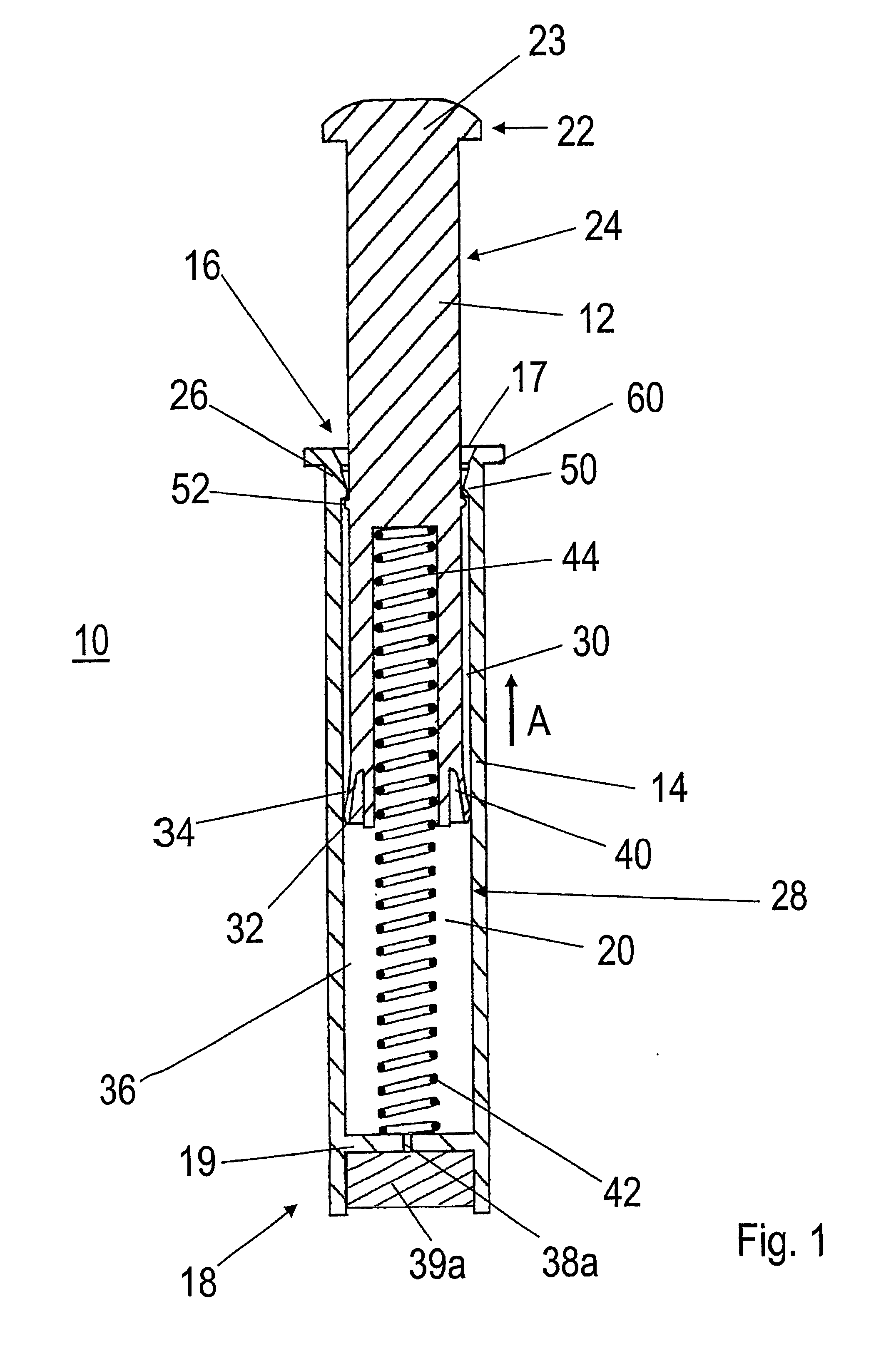End-Stop Damper
a damper and end-stop technology, applied in the direction of shock absorbers, door/window fittings, mechanical devices, etc., can solve the problems of inability to provide the desired damping effect, the effect of simple construction and effective damping
- Summary
- Abstract
- Description
- Claims
- Application Information
AI Technical Summary
Benefits of technology
Problems solved by technology
Method used
Image
Examples
Embodiment Construction
[0033] This invention is explained in greater detail in view of exemplary embodiments represented in the drawings, wherein:
[0034]FIG. 1 shows a door-closing damper in a lateral and sectional view, in accordance with one embodiment, having a damping member arranged at the closed end of the damper body, and with the sliding element completely extended;
[0035]FIG. 2 shows a door-closing damper in a lateral and sectional view in accordance with a further embodiment, having a damping member arranged at the sliding element, wherein the sliding element is shown completely extended;
[0036]FIG. 3 shows a door-closing damper in a lateral and sectional view in accordance with a still further embodiment, having a damping member arranged at the closed end of the damper body, a pin arranged in the hollow chamber, and with the sliding element completely extended;
[0037]FIG. 4 shows a door-closing damper in accordance with FIG. 3, in a lateral and sectional view, with the sliding element completel...
PUM
 Login to view more
Login to view more Abstract
Description
Claims
Application Information
 Login to view more
Login to view more - R&D Engineer
- R&D Manager
- IP Professional
- Industry Leading Data Capabilities
- Powerful AI technology
- Patent DNA Extraction
Browse by: Latest US Patents, China's latest patents, Technical Efficacy Thesaurus, Application Domain, Technology Topic.
© 2024 PatSnap. All rights reserved.Legal|Privacy policy|Modern Slavery Act Transparency Statement|Sitemap



